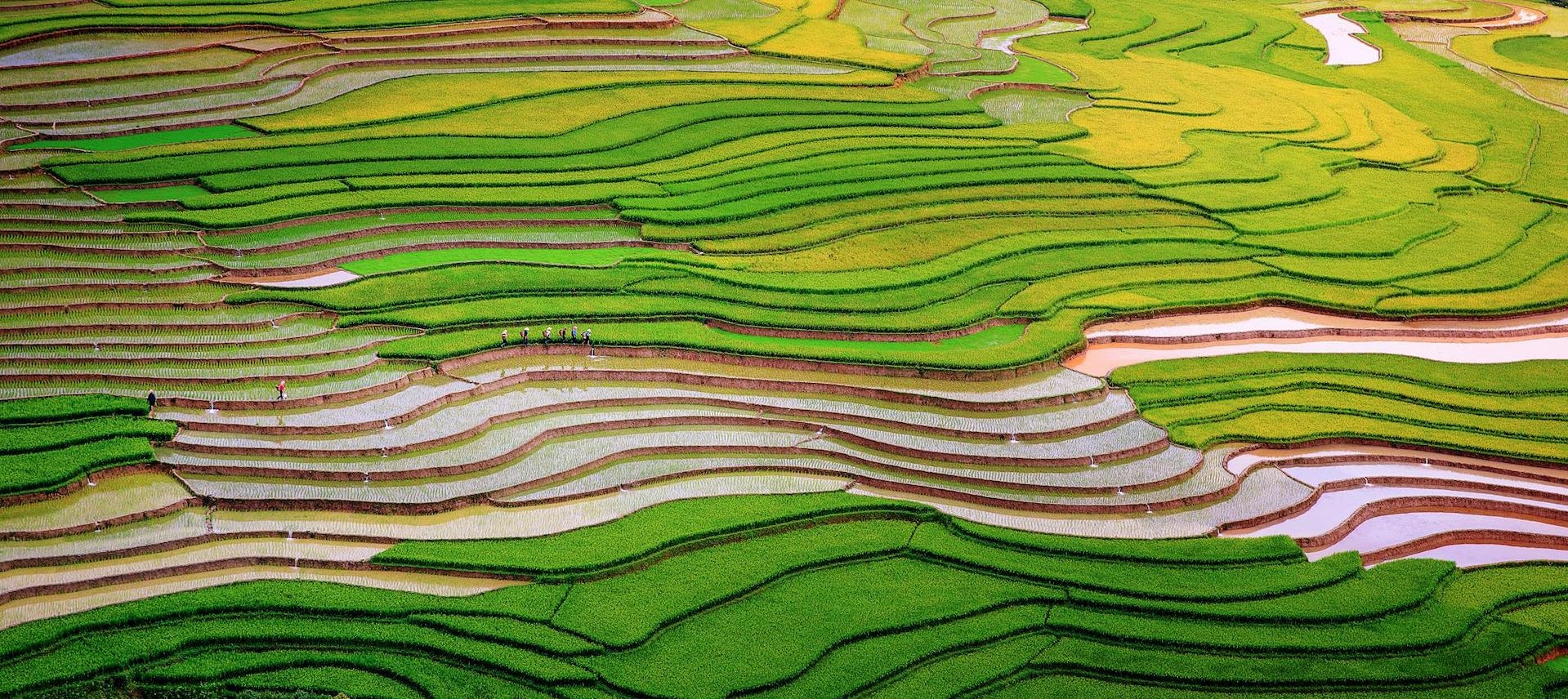
Yen Bai Province offers a diversity of attractions: terraced fields, mountain peaks, hot springs, Thac Ba Lake, Mu Cang Chai, and Ta Xua Peak, all of which draw tourists year-round.
Nestled in the northwest, the province lies approximately 160 kilometers from Hanoi and shares borders with Tuyen Quang, Phu Tho, Lai Chau, Son La, Lao Cai, and Ha Giang provinces.
Nghia Lo Town
The town is home to the vast Muong Lo, the second-largest field in the northwestern mountainous region. Muong Lo is also famous for its hot springs, which draw visitors and locals alike seeking relaxation. Additionally, Nghia Lo has Shan Tuyet tea, a Vietnamese tea made from the leaves of old-growth trees in the mountains of northwest Vietnam, where the forests are over 1,200 meters above sea level.
History enthusiasts will find interest in Nghia Lo's historical sites, including Cang and Nghia Lo Fort. These sites were officially recognized as National Historical Monuments in 1996. They contain valuable documents and artifacts that provide insights into the period of French colonial domination and the imprisonment of war captives during that time.
Nature lovers can explore Thia Stream, which is also known as "Tears Stream" locally. It is situated in the northern area of the Muong Lo. During the watering season, the stream bed widens to nearly one hundred meters.
Thac Ba Lake
Thac Ba Lake stands as one of the three largest artificial lakes in Vietnam, originating from the construction of the Thac Ba Hydroelectric Plant. Spanning nearly 20,000 hectares, the lake sprawls across Yen Binh and Luc Yen districts.
Thac Ba has over 1,300 islands, both large and small. Nestled within the heart of the limestone mountains lies a cave system waiting to be explored. A visit to Thac Ba Lake offers not only the opportunity to witness the marvel of the Thac Ba Hydropower Plant, but also a chance to experience spiritual enrichment at the Thac Ba Mother Goddess Temple, a sacred site recognized as a provincial historical and cultural relic in 2004.
Paragliding above the fields of Khau Pha Pass
Khau Pha Pass, known as one of Vietnam's four great passes, connects the districts of Mu Cang Chai and Van Chan. However, what sets this pass apart is the experience it offers during the ripening rice season.
Every harvest season, adventure seekers flock to Khau Pha Pass for an adventure: paragliding over the rice fields. The takeoff point stands atop a hill, situated at an elevation of 1,200 meters above sea level. Each traveler is accompanied with a seasoned pilot.
The duration of each flight ranges from 10 to 20 minutes, depending on weather conditions. Prices for this experience vary between VND2 million to VND2.5 million ($78 to $98) per person, depending on the day of the week.
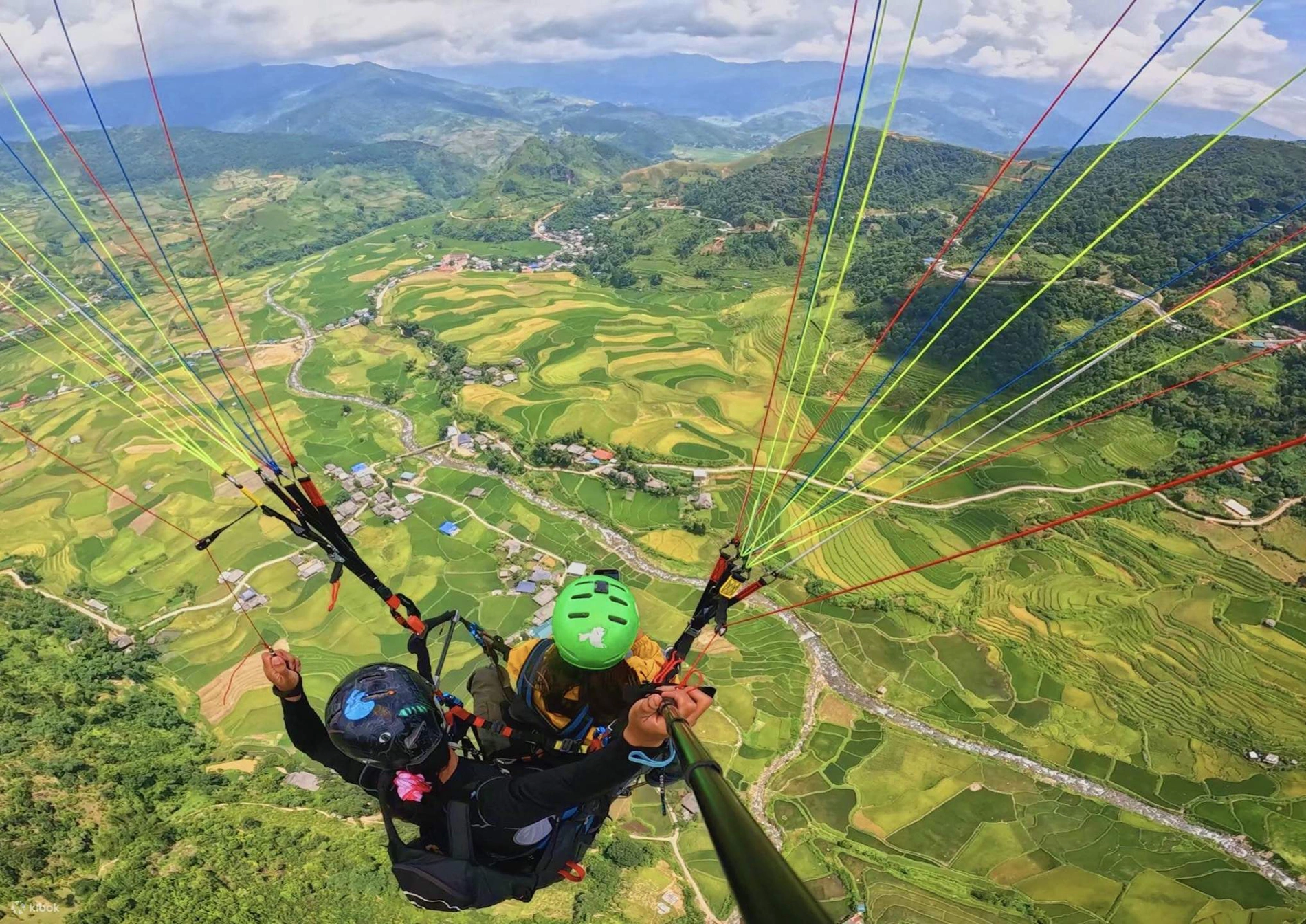
Ziplining in Tu Le
Tu Le Commune in Van Chan District is home to Vietnam's longest zipline route, located within the Aeris Hill adventure game area, which opened in 2020.
This zipline adventure spans two stages, totaling a length of 1.2 kilometers. The first stage stretches nearly 1 kilometer, offering visitors a panoramic view of the Tu Le Valley. The second stage concludes at a designated bus stop from which guests can ride back to the amusement park.
For safety reasons, visitors weighing under 50 kilograms will carry an additional 10-kilogram sandbag to ensure a smooth glide along the route. Each person can expect to spend approximately 2 minutes completing both stages of the zipline adventure.
Mu Cang Chai
Mu Cang Chai is beautiful year-round. April and May mark the watering season when the terraced fields become mirrors reflecting the sky. In September and October, Mu Cang Chai turns golden, attracting photographers and tourists. Even in winter or spring, Mu Cang Chai blooms with to day (prunus cerasoides) flowers. Key destinations in Mu Cang Chai include Thai Village, the La Pan Tan terraced fields, Che Cu Nha Commune, and De Xu Phinh Commune.
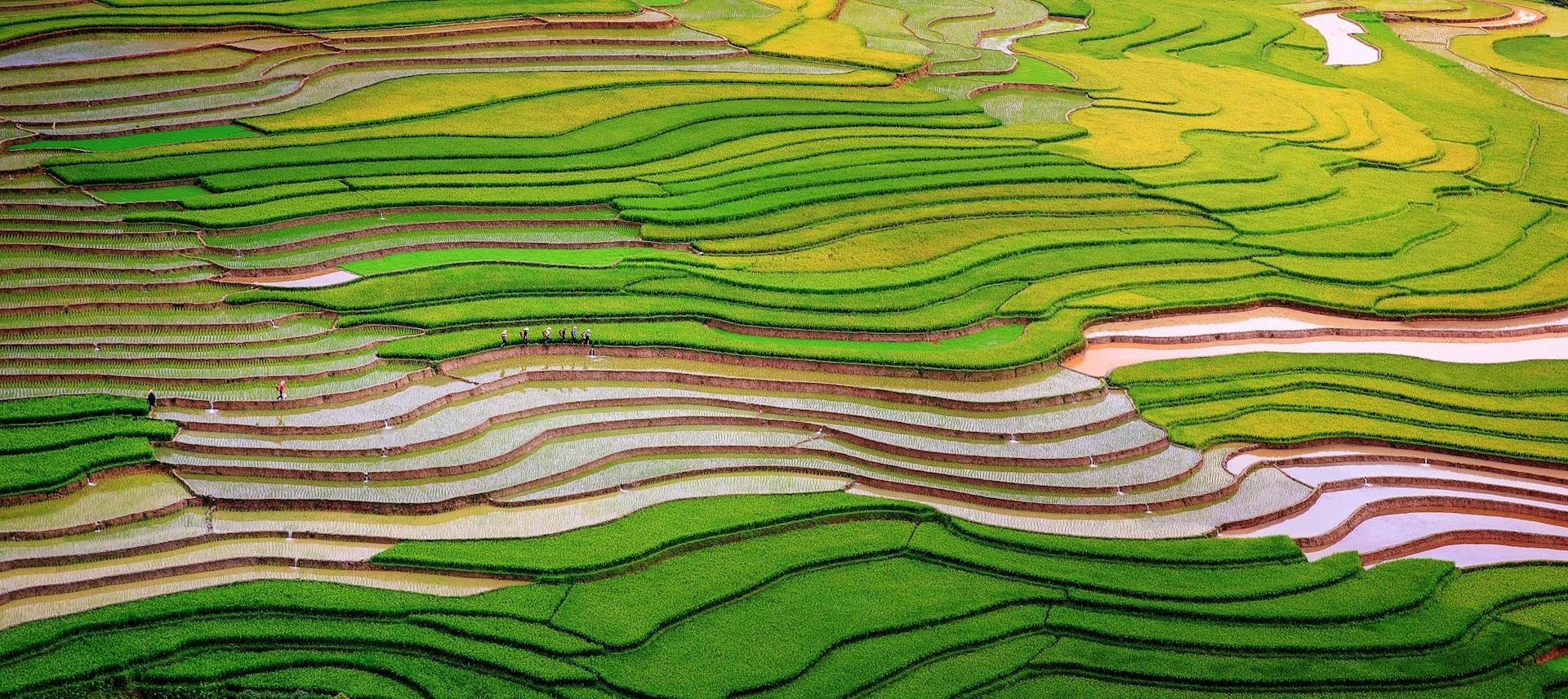
Tu Le Valley
Nestled near Mu Cang Chai, Tu Le Valley is separated by Khau Pha Pass and serves as a popular stop for backpackers. Many tourists opt to visit both Tu Le and Mu Cang Chai, drawn by Tu Le's scenery, sticky rice specialties, natural hot mineral springs, and opportunities to experience the customs of the Thai ethnic group. Tu Le's fields are distinct in that they evoke a feeling of calmness and closeness, unlike other tourist destinations in the region built on steep hills or in deep valleys.
Tram Tau District
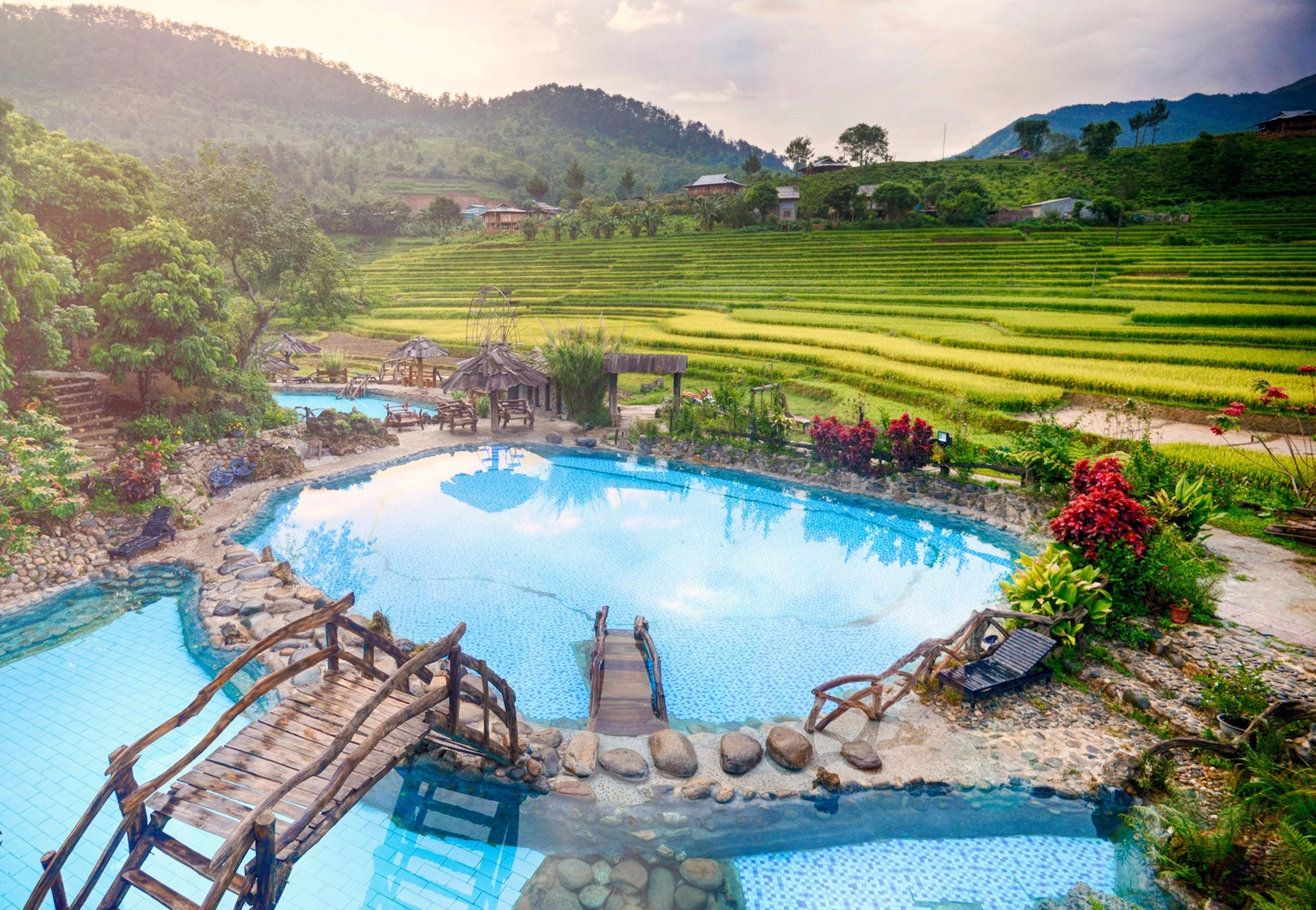
Tram Tau has gained recognition for its scenery and a range of activities for tourists to enjoy. Visitors have the opportunity to explore nature, including mountains and forests, and learn about the culture of the local Hmong and Thai ethnic groups. The area offers adventure activities as well as options for community-based and resort-style tourism experiences.
Ta Xua Peak
Ta Xua serves as the natural border between Yen Bai and Son La provinces, boasting an altitude of approximately 2,800 meters. Among the 15 highest mountain peaks in Vietnam, Ta Xua features narrow, steep roads flanked by deep abysses on either side. Travelers have the option to reach the peak by motorbike, car or different trekking routes available from both Yen Bai and Son La provinces.

Yen Bai offers a range of dishes typical of the northern mountainous provinces, including specialty meats prepared, sticky rice with ant eggs, honey-grilled chicken, assorted sticky rice dishes, and sausage.
Additionally, Yen Bai has some unique specialties:
Nam pia
The main elements of the dish are the excrement in the small intestine and internal organs of cows, goats, buffaloes, or horses.
This dish features the organs of herbivores combined with a thick liquid extracted from the small intestine of cows, goats, buffaloes, or horses. Cooked with an assortment of spices, Nam Pia results in a dark brown, thick liquid in a bowl. Initially, it may taste bitter, but it later develops a sweet flavor with hints of mac khen - a type of spice similar to Sichuan pepper. Nam pia can be used as a dipping sauce for grilled meat dishes or enjoyed with steamed beef or goat.

Black sticky rice cake
Muong Lo’s black chung sticky rice cake stands out not only for its color but also for its flavor. Ingredients for making the cake include dong leaves for wrapping, Tu Le sticky rice, green beans, and pork belly. To achieve its distinct hue, the bark of the black sesame tree is used, or black sesame flowers are burnt into charcoal, pounded into a fine powder, and mixed with rice.
Black chung cake is handcrafted from scratch. Traditionally, this type of cake was reserved for Tet holidays or death anniversaries, but it has now gained popularity and is often purchased as a special gift.
Pork wrapped in bamboo shoots
Yen Bai offers various types of bamboo shoots, each processed into distinct dishes with flavors, including meat-wrapped bamboo shoots. The meat filling typically combines fatty and lean pork belly, mixed with chopped laksa leaves and eggs, seasoned with salt and seasoning powder. The mixture is then wrapped in thinly sliced bamboo shoots and cooked until both the bamboo shoots and meat are fully cooked.
Young green rice (Com)
Tu Le Commune is known for its young green rice that is best enjoyed fresh. The harvested rice must be processed on the same day. After removing the flat seeds, the rice is roasted, cooled, and pounded in a mortar. Every stage of making Tu Le green rice is carried out manually.
The grains of Tu Le's young green rice are soft, fragrant, with an initial hint of bitterness that transitions into a slightly sweet taste. This rice is often paired with red persimmons, bananas, or incorporated into dishes such as duck porridge, sticky rice, and fried spring rolls.
Shan Tuyet tea
Shan Tuyet tea originates from old tea trees, some hundreds of years old, cultivated at the summit of the Giang River in Van Chan District, at an altitude of nearly 1,400 meters above sea level.
The Shan Tuyet tea tree is easily identifiable by its white trunk covered in moss, its twisting branches, and its tall stature, which necessitates harvesters to climb up in order to pick the tea leaves. Additionally, because of the cool and cloudy weather conditions in the area, the tea buds and leaves tend to grow larger and are covered with a layer of white fluff.
Shan Tuyet tea is harvested three times a year and is highly regarded for its unique qualities. It's known for being difficult to cultivate, grown in pristine conditions, rare in availability, exceptionally flavorful, and thus commanding high prices, with the best quality fetching up to VND10 million ($393) per kilogram and typically selling for VND2 million to VND3 million per kilogram.
Chili bamboo shoots
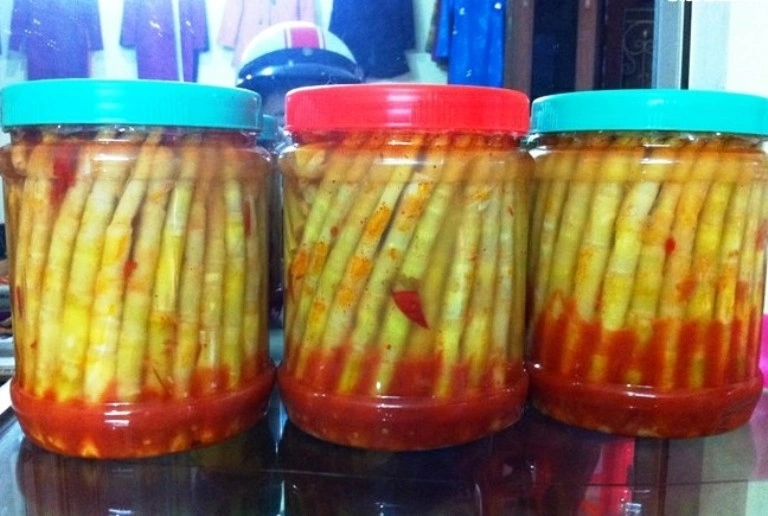
Tram Tau chili bamboo shoots are a local delicacy made from a variety of bamboo shoots, which only grows in high-altitude mountains. These shoots, about the size of a finger and densely packed, are abundant on the rocky slopes of Tram Tau District.
Each autumn, as the pass is blanketed with layers of dew, the bamboo shoots begin to sprout. For the Hmong people in Tram Tau, chili bamboo shoots are an essential dish enjoyed during field meals or Tet holidays.
Sticky rice
Chi chua, nep nuong, and black rice are sticky rice varieties cultivated by the Hmong people in Tram Tau District. Tram Tau sticky rice is known for its natural sweetness and distinctive aroma. Before cooking, the rice is typically soaked for 2-4 hours and boiled for 25-30 minutes.
Apart from being a staple for rice dishes and chung cake, it can also be used to make sweet soup desserts, rice milk, or distilled into rice wine. Additionally, sticky rice flour is utilized in making treats such as glutinous rice balls or young green rice cakes.
Fruits
Yen Bai boasts three renowned fruits: Vinh Lac District's persimmon, Tan Linh Commune’s orange, and Minh Xuan Commune’s tangerine.
Vinh Lac persimmons often bloom during the Mid-Autumn Festival. To prepare them, the fruit is soaked in water for about 36 hours, then drained, peeled, and cut into pieces. These persimmons are bright yellow, offering a sweet taste, and are seedless and crisp.
Tan Linh oranges are yellow-brown with rough, thick skin. When you peel them, the segments inside are juicy, with a strong and rich sweet taste.
Luc Yen tangerines are bright pink with green spots, featuring a smooth texture and easy-to-peel skin. They are fragrant and juicy.
Honey from Mu Cang Chai forest
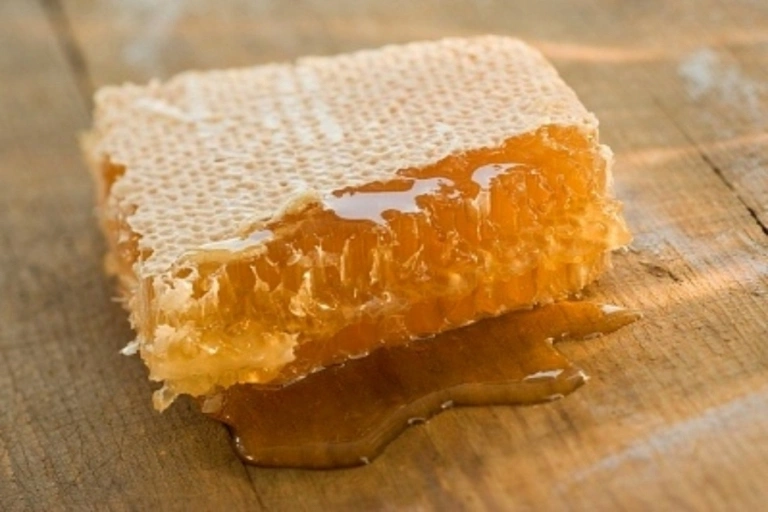
Wild honey from Mu Cang Chai is highly valued by tourists as a souvenir. It is produced by bees that collect nectar from wild flowers in the area, resulting in a flavorful and aromatic honey. The honey is collected from bee nests located in natural cavities such as rock caves and tree hollows. It has a pure sweetness and does not crystallize easily.
When traveling from Hanoi to Yen Bai, there are two main routes to consider. Historically, travelers would take Highway 32, passing through Son Tay Town, Trung Ha Bridge, and Thu Cuc Commune of Phu Tho Province, covering nearly 200 kilometers over approximately 5 hours. This route remains a popular choice.
However, nowadays, many tourists opt for the faster Hanoi-Lao Cai Expressway route, which shortens the distance to about 150 kilometers and reduces travel time to nearly 3 hours.
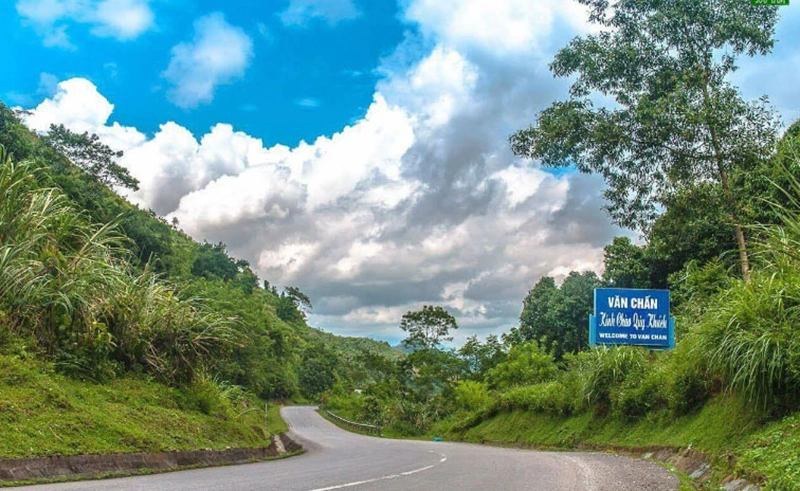
It's essential to select the route based on your specific destination within Yen Bai Province and your individual preferences. Consulting Google Maps beforehand or seeking guidance from locals or experienced travelers familiar with the region can be helpful.
Distances between notable destinations within Yen Bai Province include:
Nghia Lo Town to Tu Le Commune: 50 kilometers
Tu Le Commune to Mu Cang Chai District: 60 kilometers
Nghia Lo Town to Tram Tau District: 30 kilometers
Yen Bai City to Nghia Lo Town: 75 kilometers
Tourists from other areas usually arrive in Hanoi through various means of transportation such as air travel, road travel, or railway. Once they reach Hanoi, they then proceed to travel to Yen Bai using their own personal vehicles, passenger buses, rented cars, or taxis, depending on their preferences and convenience.
Accommodation options in Mu Cang Chai are popular with tourists as they cater to various budgets. The area boasts affordable homestays and dormitories, located around popular tourist destinations like the district center.
In recent years, Mu Cang Chai has seen the emergence of quality resorts offering more amenities and privacy. Travelers can choose from establishments like the Mu Cang Chai Homestay, Mu Cang Chai Ecolodge, La Pan Tan Paradise, and Dream House Homestay.
Additionally, in 2024, the luxurious Garrya Mu Cang Chai resort is set to open, providing even more accommodation options.

Garrya Mu Cang Chai offers accommodations with views overlooking terraced fields. Photo by VnExpress/Trung Vu
In Tu Le, accommodation mainly consists of homestays, stilt houses, and budget motels. Room rates typically range from VND200,000 to VND500,000 ($7.80 to $19.60) per night, while stilt houses can cost between VND50,000 to VND100,000 per person.
Popular choices include Bung Xom Homestay, Thuy Linh Homestay, Sung A Ho Homestay, Quyet Doan Homestay, Nhat Thinh Homestay, and Suoi Tien Guesthouse.
For a more luxurious experience, the Le Champ Tu Le Resort Hot Spring & Spa offers 100 bungalows with comprehensive services, including hot mineral baths, a zipline slide, and massage services.
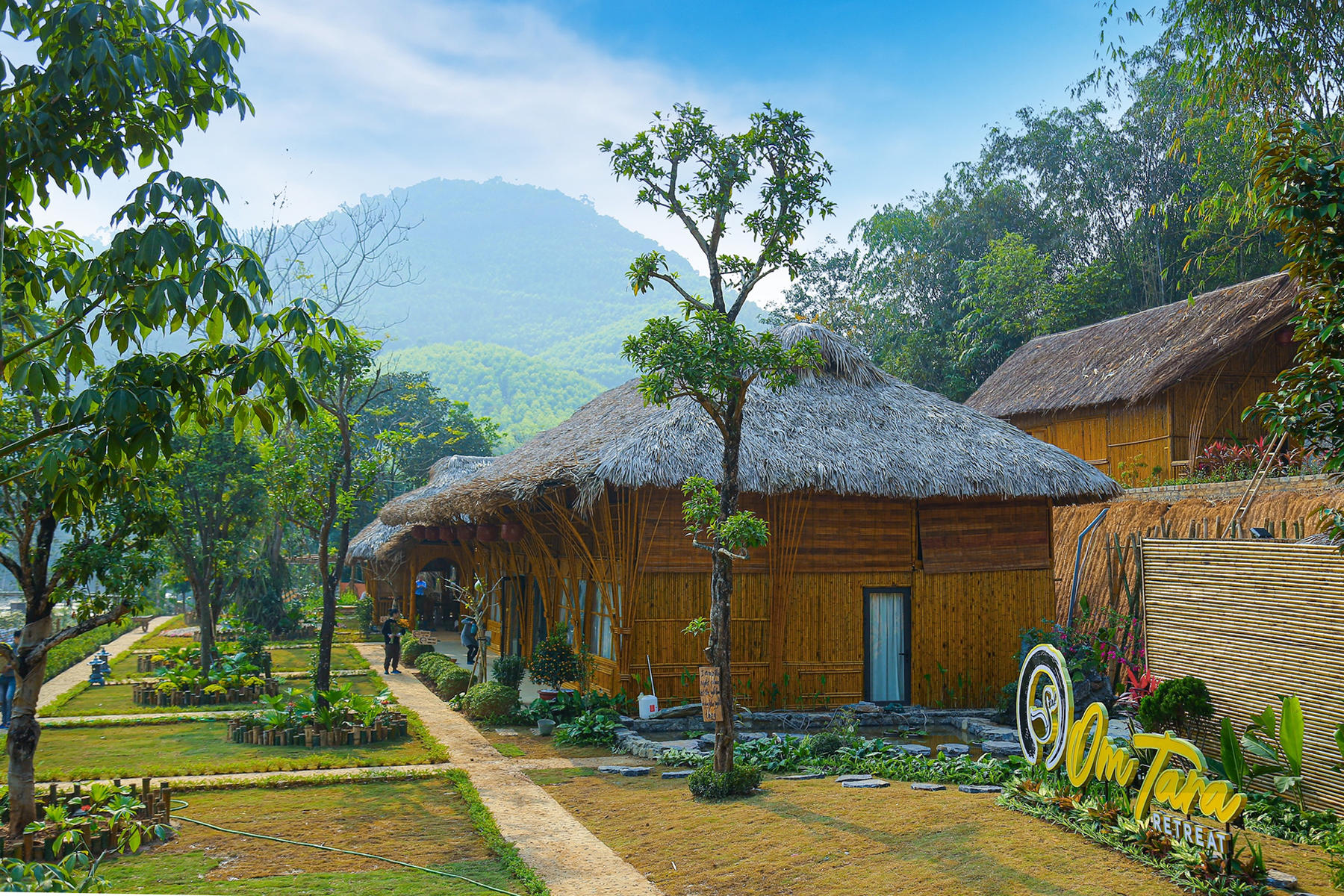
Yen Bai City offers a range of accommodation choices, from 2-3 star hotels to budget-friendly homestays and motels. Some options include Hong Nhung - Yen Bai, Phuong Thuy, Nhu Nguyet, Thien Huong, and various affordable motels, with room rates spanning approximately VND200,000 to VND800,000 ($7 to $31).
Nghia Lo Town, though small and lacking in attractions, serves as a convenient stopover for travelers en route to other destinations in the province. Overnight stays can be arranged at Muong Lo Retreat Yen Bai, Dragonfly Hotel Nghia Lo, Muong Lo Hotel, Mien Tay Hotel, or other budget motels.
Moreover, Yen Bai features accommodation spots in districts with notable tourist attractions, such as Thac Ba Paradise Islands and Thac Ba Green Island tourist area in Yen Binh district. Vu Linh Homestay Thac Ba and Om Tara Retreat offer rooms ranging from VND800,000 to VND3 million per night ($31 to $117).
Tam Anh